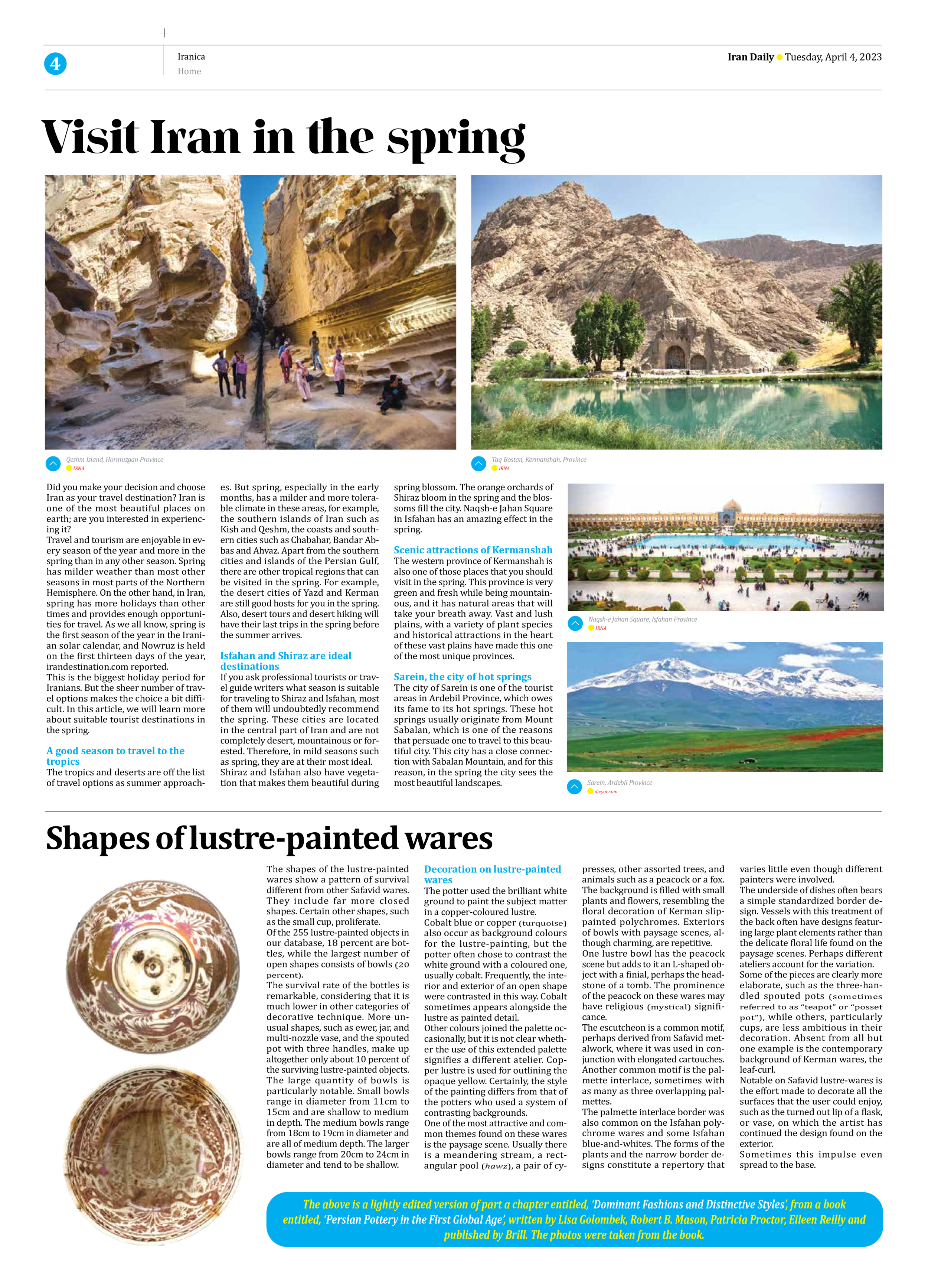
Shapes of lustre-painted wares
The shapes of the lustre-painted wares show a pattern of survival different from other Safavid wares. They include far more closed shapes. Certain other shapes, such as the small cup, proliferate.
Of the 255 lustre-painted objects in our database, 18 percent are bottles, while the largest number of open shapes consists of bowls (20 percent).
The survival rate of the bottles is remarkable, considering that it is much lower in other categories of decorative technique. More unusual shapes, such as ewer, jar, and multi-nozzle vase, and the spouted pot with three handles, make up altogether only about 10 percent of the surviving lustre-painted objects.
The large quantity of bowls is particularly notable. Small bowls range in diameter from 11cm to 15cm and are shallow to medium in depth. The medium bowls range from 18cm to 19cm in diameter and are all of medium depth. The larger bowls range from 20cm to 24cm in diameter and tend to be shallow.
Decoration on lustre-painted wares
The potter used the brilliant white ground to paint the subject matter in a copper-coloured lustre.
Cobalt blue or copper (turquoise) also occur as background colours for the lustre-painting, but the potter often chose to contrast the white ground with a coloured one, usually cobalt. Frequently, the interior and exterior of an open shape were contrasted in this way. Cobalt sometimes appears alongside the lustre as painted detail.
Other colours joined the palette occasionally, but it is not clear whether the use of this extended palette signifies a different atelier. Copper lustre is used for outlining the opaque yellow. Certainly, the style of the painting differs from that of the potters who used a system of contrasting backgrounds.
One of the most attractive and common themes found on these wares is the paysage scene. Usually there is a meandering stream, a rectangular pool (hawz), a pair of cypresses, other assorted trees, and animals such as a peacock or a fox. The background is filled with small plants and flowers, resembling the floral decoration of Kerman slippainted polychromes. Exteriors of bowls with paysage scenes, although charming, are repetitive.
One lustre bowl has the peacock scene but adds to it an L-shaped object with a finial, perhaps the headstone of a tomb. The prominence of the peacock on these wares may have religious (mystical) significance.
The escutcheon is a common motif, perhaps derived from Safavid metalwork, where it was used in conjunction with elongated cartouches.
Another common motif is the palmette interlace, sometimes with as many as three overlapping palmettes.
The palmette interlace border was also common on the Isfahan polychrome wares and some Isfahan blue-and-whites. The forms of the plants and the narrow border designs constitute a repertory that varies little even though different painters were involved.
The underside of dishes often bears a simple standardized border design. Vessels with this treatment of the back often have designs featuring large plant elements rather than the delicate floral life found on the paysage scenes. Perhaps different ateliers account for the variation.
Some of the pieces are clearly more elaborate, such as the three-handled spouted pots (sometimes referred to as “teapot” or “posset pot”), while others, particularly cups, are less ambitious in their decoration. Absent from all but one example is the contemporary background of Kerman wares, the leaf-curl.
Notable on Safavid lustre-wares is the effort made to decorate all the surfaces that the user could enjoy, such as the turned out lip of a flask, or vase, on which the artist has continued the design found on the exterior.
Sometimes this impulse even spread to the base.
The above is a lightly edited version of part a chapter entitled, ‘Dominant Fashions and Distinctive Styles’, from a book entitled, ‘Persian Pottery in the First Global Age’, written by Lisa Golombek, Robert B. Mason, Patricia Proctor, Eileen Reilly and published by Brill. The photos were taken from the book.







